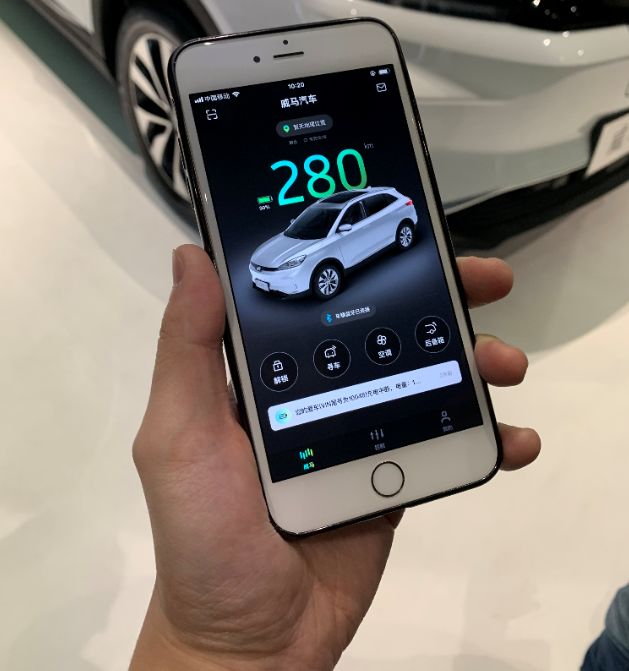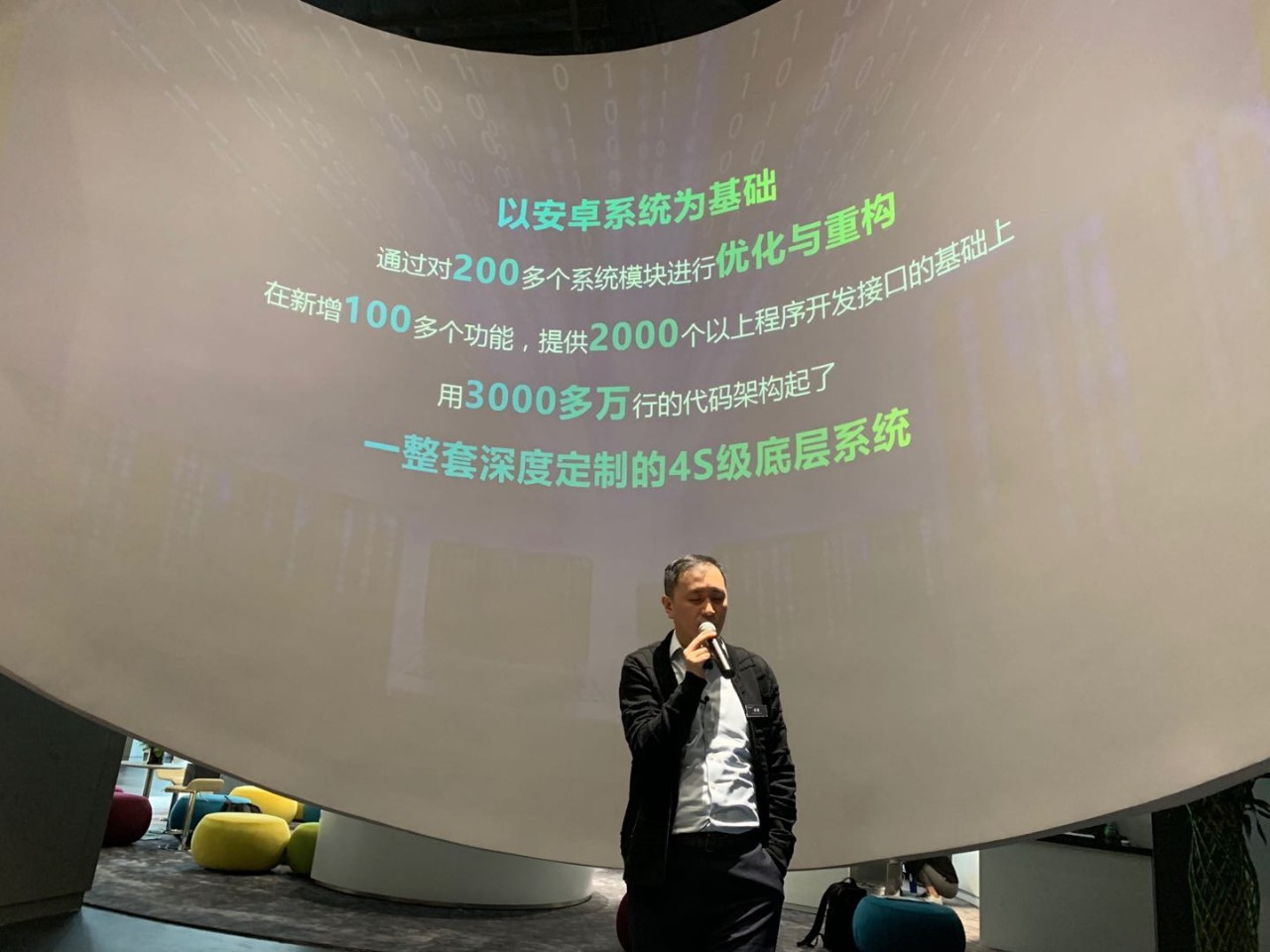In the new car-making clan, WM Motor is among the few leading companies that have started large-scale vehicle deliveries. However, in the era of intelligent vehicles, delivering vehicles is only the first step. The focus next is on operations and services covering the entire life cycle.
Before this, WM Motor has not fully explained its thinking and layout in the intelligent field to the media and users. This communication shortcoming has led to a lack of branding image for WM Motor in the dimension of intelligence.
As a new car-making company, how does WM Motor view intelligence? Yesterday, WM Motor pushed the first OTA update for EX5 owners, let’s take a look.
v1.1 Update
First, let’s talk about the update. According to the official statement, the WM Motor’s entire intelligent interaction system Living Engine has been updated from v1.0 to v1.1, with the main updates as follows:
-
Support for remote control via Apple Watch, including remote opening/closing of trunk, air conditioning/sunroof, vehicle locating, etc.
-
Added Koala FM selected channels
-
Support for binding iQiyi personal accounts
-
Interior ambient light interaction, providing concert mode
-
Control of Xiaomi smart devices through in-vehicle voice remote
-
Voice broadcast of contact messages for social tools in the vehicle, with intelligent locating function

As can be clearly seen, for the first update, WM Motor still focuses mainly on improving functionality and enriching the ecology. But there’s still an interesting point worth mentioning. WM Motor can freely choose to integrate with the best third-party application services on the market, such as Koala FM, iQiyi, Xiaomi, and WeChat.
For example, Alibaba Banma integrated with WeChat, Baidu Xiaodu car integration with Gaode Maps, and Tencent Changan Wutong car networking integration with iQiyi. Many times, these three products are difficult to land, not because of technical challenges, but because of the “ideology” problem of competition between the BAT companies in the intelligent vehicle ecology field.
However, this is not a problem for WM Motor. On November 28th, at the “2018 Xiaomi AIoT Developer Conference”, WM Motor became one of the first car companies to land Xiaomi IoT car-home interconnection services. The background here is that Xiaomi IoT has built the world’s largest IoT ecology, supporting nearly 2,000 devices, and the number of intelligent devices accessed has exceeded 132 million units.
WM Motor owners only need to bind their Mi Home accounts through the mobile App, to remotely control home smart devices through in-vehicle voice, and when at home, they can also remotely check the vehicle’s electricity, endurance mileage, and switch the trunk and other functions through Xiaomi’s Xiaoai speakers.
Living Engine## Updating the Living Engine System of WM Motor
The Living Engine system developed by WM Motor is based on Android, which is currently the most prosperous mobile Internet ecological operating system. WM Motor dedicated significant effort in making Living Engine closer to a car operating system rather than a phone operating system, even though it is based on Android. According to the official introduction, WM Motor optimized and restructured more than 200 system modules, made large-scale improvements to the system power management, boot process, and even the system kernel and framework. As a result, Living Engine’s underlying system can not only be started quickly within 10 seconds but can also run smoothly under high-intensity pressure 7×24 hours.
On this basis, the technical team has carried out secondary development of the application based on the smart car scene. As mentioned in the introduction, “Directly importing massive applications into the car without filtering is the biggest misunderstanding of the mobile intelligent space. All our applications are not installed directly into the car through APK but are developed deeply from SDK forms.”
These two paragraphs basically convey one thing: to make the system more “car rule”-oriented, thus reducing the probability of crashes. WM Motor also spent more effort in developing apps, avoiding high-risk usage scenarios such as “eat chicken” (a popular mobile game) directly on the central control. Obviously, WM Motor did not “place an Android tablet on the central control position” like some car companies.
After lighting up the screen, the UI of the entire system is displayed. Some people say that the UI of this system has been inspired by Apple Watch. However, there is an obvious problem: is it reasonable to use a similar UI design on a smartwatch with a screen size of less than 2 inches and a 12.8-inch car central control screen?
On the home page, WM Motor arranged three frequently used functions: maps, music, and radio. If users want to use other functions, they can click the bottom left corner. The advantage of this design is that it is indeed differentiating and largely in line with WM Motor’s young target audience. However, from the perspective of interaction efficiency, the entire screen space is not fully utilized, and the usage cost of pressing a specific function is higher.
When entering a certain function area, such as the selected radio station newly added in v1.1, the entire UI design changes to a card-style UI with larger color blocks that better fit the driving scene. The different UIs under the two-level menu result in disjointed interaction logics of the two interfaces.
Of course, this is not a big deal, as we can push two sets of themes that run through the entire system for user customization in the next update. Let young people use bright and colorful Apple Watch-style themes, and let others use more mainstream and efficient card-style UI.
OTA for the Whole Vehicle?
Now, let’s talk about a more fundamental issue, does the WM EX5 support OTA for the whole vehicle?
WM CTO Yan Feng said that, currently, WM EX5 is controlling over 90% of the intelligent cockpit’s hardware, including the central control, dashboard, air conditioning, windows, seats, ambient lighting, internal and external cameras, etc.
From the upgrade range, the WM OTA will cover the following seven major controllers:
- HU (in-vehicle entertainment host)
- TBOX (remote communication module)
- ICU (dashboard)
- AVM (360-degree panoramic view)
- DVR (in-vehicle driving recorder)
- AVAS (low-speed pedestrian warning)
- RM (rotating mechanism controller of the in-vehicle entertainment host)
There are 13 functional modules in total, none of which are related to the powertrain. One critical point: can the powertrain and chassis control be OTA upgraded?
Yan Feng mentioned in his speech that they will also upgrade the “chassis control and power steering” in the future, and there is a sentence in the official article: “Future upgrades will also include ‘vehicle power, chassis, and body-related controller upgrades.'” If this is the case, there is no doubt that WM supports OTA for the whole vehicle.
We have been emphasizing that OTA for the whole vehicle is one of the key criteria for determining whether a car is smart or not. I want to say that OTA for the whole vehicle should not be demonized because some companies have abused it by launching products with unfinished features due to the support for OTA of their vehicles. This technology itself is not wrong.
We should correctly treat OTA for the whole vehicle. It will not only fix faults and add more and more new features but also make the user experience of the car better and give the car vitality. In some recall events that do not involve hardware defects, OTA for the whole vehicle can significantly reduce the cost of resolution and improve the efficiency of resolution.
This is a win-win technology for both car companies and users.Yan Feng said that WM Motor will achieve normalized, hardware and software integrated, and secure vehicle OTA next year. Let us wait and see.


This article is a translation by ChatGPT of a Chinese report from 42HOW. If you have any questions about it, please email bd@42how.com.
